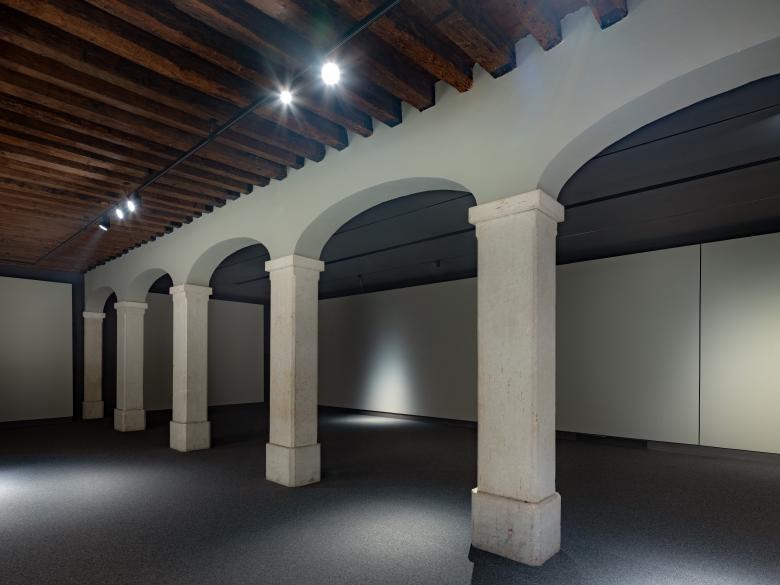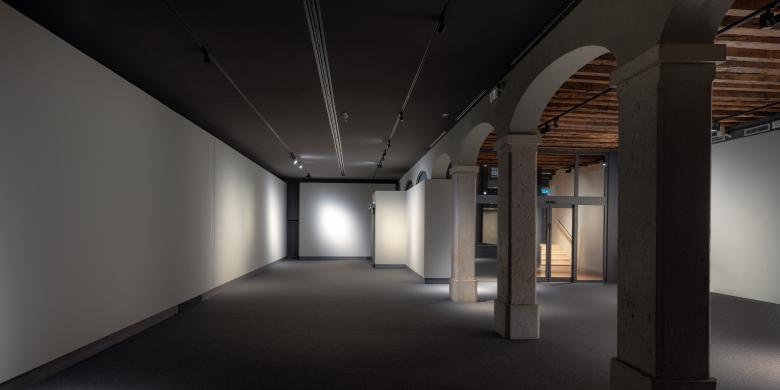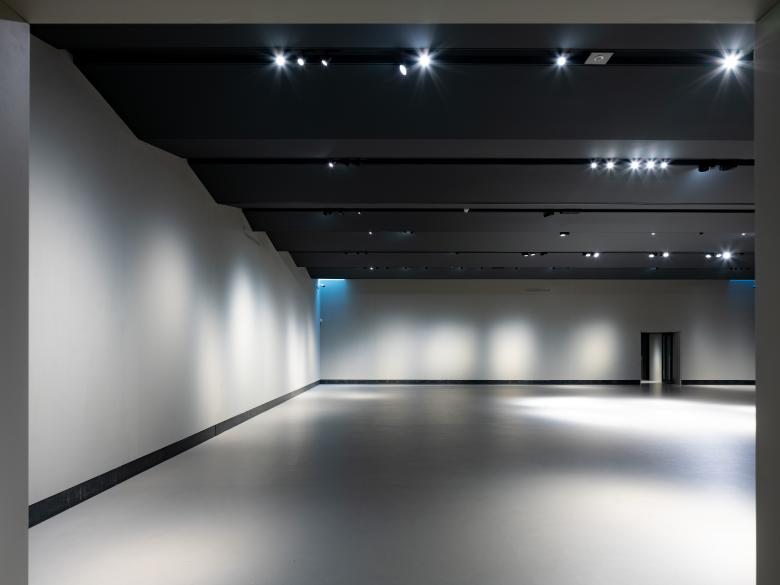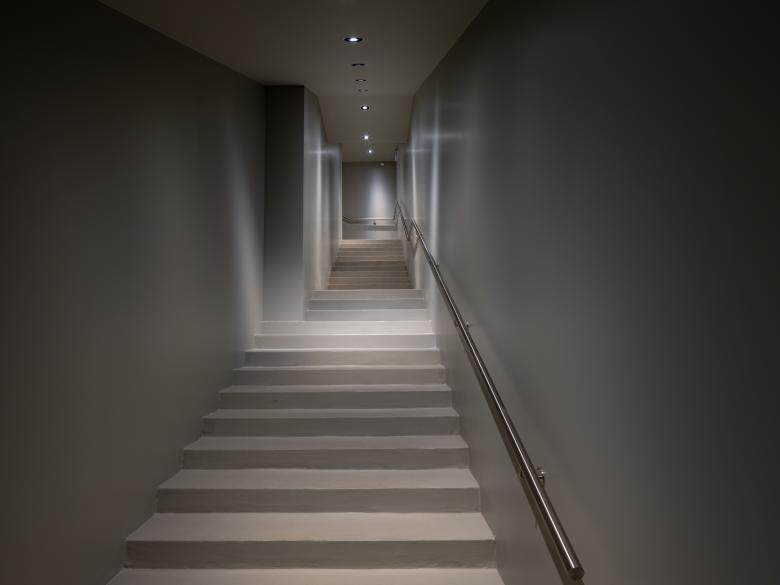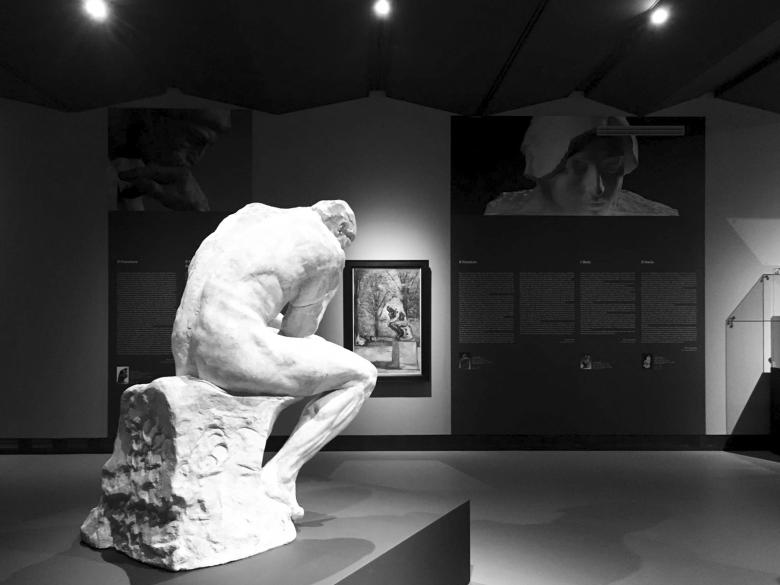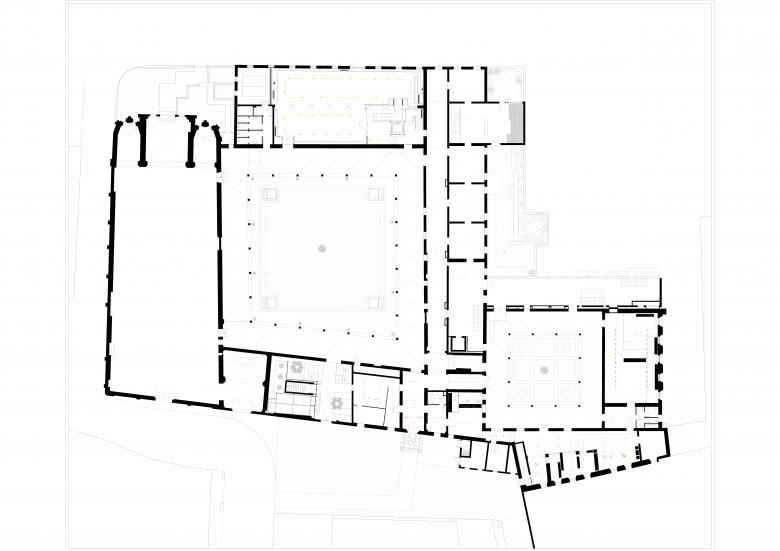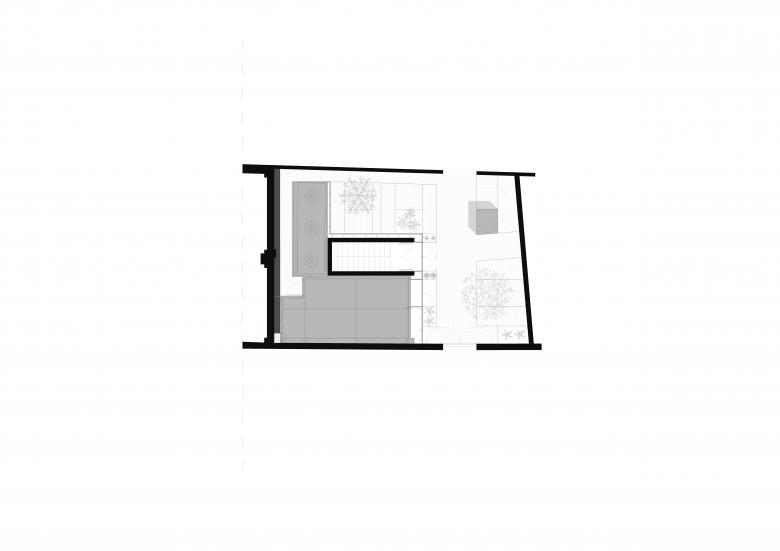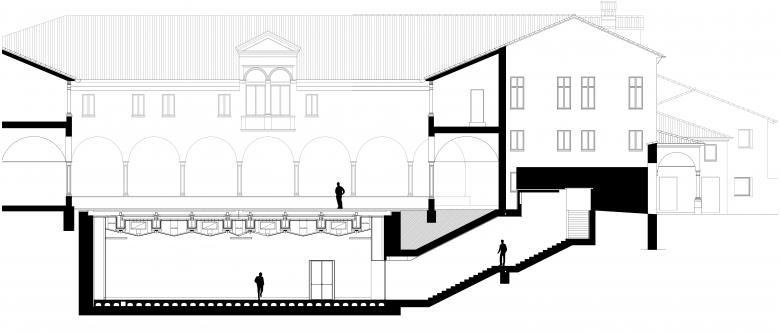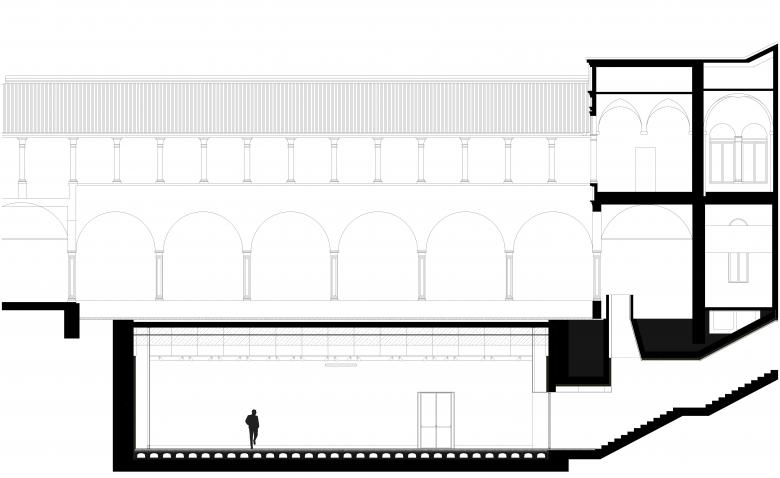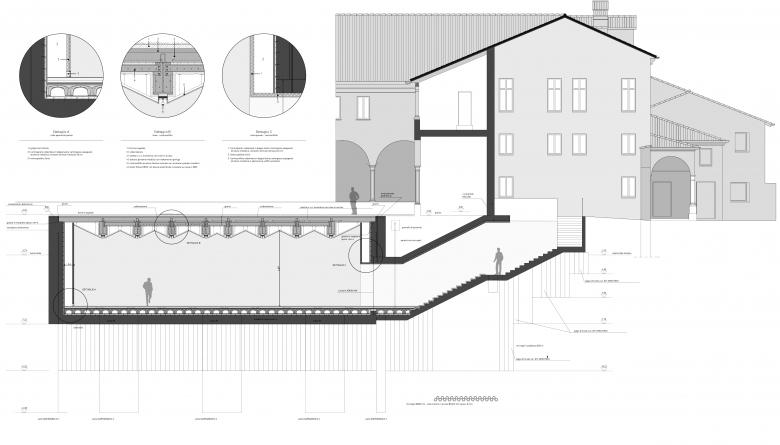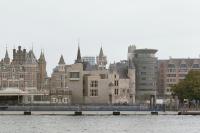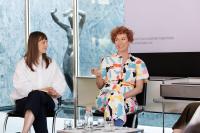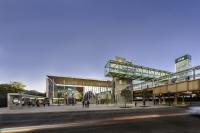Santa Caterina Museum
Treviso , Italy
The project for the Civic Museums of Santa Caterina di Treviso was carried out in three different phases with a general aim: to regenerate a large part of the museum complex and to adapt it to high performance standards for setting up, safety and air conditioning and to create spaces dedicated to contemporary art exhibitions. The complex of Santa Caterina is an aggregation of the Santa Caterina Church (14th century) with the ancient Convent, through the cloisters “large” and “small” (mid 16th century). Following subsequent interventions, an underground room was created, called the “Ipogea room” of 450 m2, located under the “large” cloister and dedicated to conferences and other activities. The mission of the project was to solve the constructive-structural problems and clarify the functional areas of the complex.
Internal paths have been re-defined and spaces dedicated to international events have been created.
The building presented various critical issues such as infiltrations, structural collapses of the roofs, masonry cracks, humidity, uncontrolled air conditioning and reception services not sufficient for a high number of visitors. The first step of the project concerned the service areas, three rooms of the Pinacoteca and two rooms of the north wing, called Ex-Scuderie. Some reception services have been placed along a path that develops around the “small” cloister: ticket office, bookshop, wardrobe and audio guides.The structural interventions were carried out on the first floor roof, with consolidation of the wooden trusses, cleaning and treatment of the entire wooden covering structure, including the reconstruction of the outer covering of the Ex-Scuderie. The fitting-out works have allowed the creation of a new environment, but at the same time respectful of the historical features of the building: the wooden covering structure of some rooms has been brought to view; some portions of valuable masonry have been enhanced before hidden, both frescoed and exposed brick; the central vaulted gallery has been restored with intervention on the plaster cracks and lighting design, previously non-existent. The fitting walls have been designed as a neutral perimeter, adaptable to the most varied requirements, also thanks to the presence of a new lighting system with retractable tracks and LED spotlights, equipped with Dali Technology. Rooms are conceived as “boxes in the box”, mutually interlocked but physically compartmentalized to preserve climate control and security; they are the most important areas of a fluid path which crosses the architectural complexity of the museum. The same approach was adopted in the second step, which involved the remaining part of the first floor, the Pinacoteca.
Six exhibition rooms have been renovated and set up. These rooms and those arranged in the previous phase hosted the exhibition “Stories of Impressionism” organized by Linea d’ombra in 2016/2017. The third step involved the Ipogea room. The aim of the work was to eliminate a constant infiltration of water coming from the ground floor and from the perimeter walls in concrete, probably badly executed and badly connected with the existing building.
The intervention was completed in just eight months and was organized in the following phases: demolition of the existing structure until the concrete structure (walls and floor); waterproofing treatment of the cleaned surfaces; restoration of the finishes with the creation of a new decking on ventilated crawl space, new inspectable false walls, new ceiling and new resin floor.The ceiling is an element characterizing the architecture of the intervention; it is like a shell that follows the existing trusses of the roof, impossible to maintain in view due to problems of climatic comfort. However it assumes its own geometry, which rhythmically articulates the large surface of the room; like sails that interact with space. The cusps created in the ceiling host the technological parts of the project: lighting bodies, cameras, sensor accessories and the projection cabin. As in all the other rooms, a new air-conditioning systems have been realized, with punctual control of temperature and humidity and also with a new smoke and CCTV detection system.The counter-walls are the second major theme of this project: the false walls have a technical vacuum on the back which can be inspected, conceived as a technical compartment for monitoring systems and perimeter structure. The hypogeum room has two staircases that connect it with the museum and a third stairway that connects it with the “large” cloister, which have also been restored and adapted to new exhibitions. A new volume has been created to manage the accesses of the hypogeum room: a corten metal casing that also becomes an access portal. The façade has been realized with modular strips set to create a precise rhythm, on which the main portal and a service door are grafted. This little architecture has a minimalist concept, based on the idea of a garden courtyard, and it dialogues in harmony with the surrounding context.The exhibition “Rodin, a great sculptor in the age of Monet”, promoted by Linea D’ombra and set up by gherardiarchitetti, was hosted in the hypogeum room and in the new restored wings in 2018.
- Architects
- Gherardiarchitetti
- Location
- Piazzetta Botter Mario, 1, 31100 Treviso , Italy
- Year
- 2018
- Client
- Comune di Treviso
- Team
- Edoardo Gherardi, Annachiara Marcon, Nicola Frigo, Massimiliano Toniolo, Marco Gennaro, Dario Fernandez
- Main contractor
- Veneziana Construction Restoration
- Main Contractor & Supplier
- Polese s.p.a.
- Consultant
- Dimension project S.N.C.,
- Consultant
- Venice Plan Engineering
- Supplier
- Veneziana Restauri Costruzioni,
- Consultant & Supplier
- Erco Lighting



